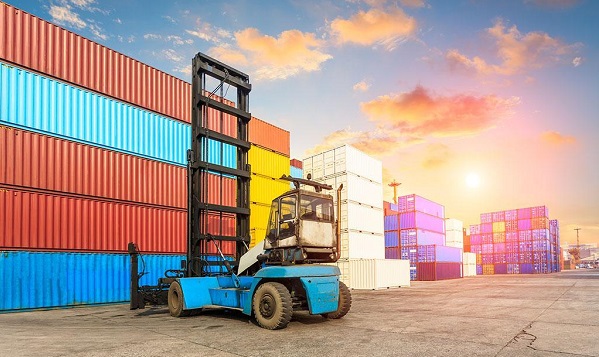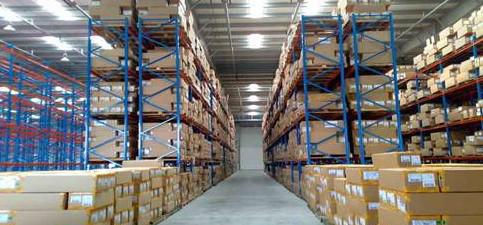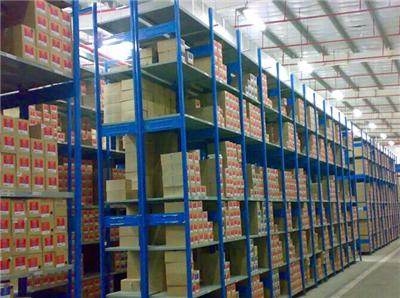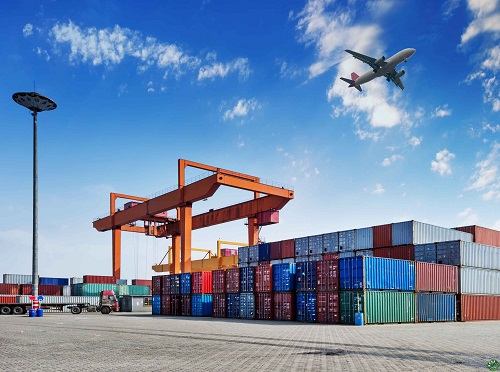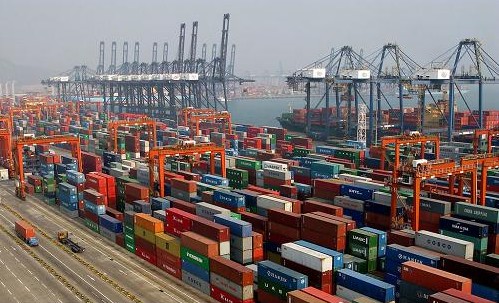Solution of RFID applied in cross-border e-commerce logistics
E-commerce is a new type of business activity model developed in recent years. It is mainly divided into Internet e-commerce and mobile e-commerce. RFID technology is a mature communication and labeling technology that has recently received widespread attention in the industry. For example, RFID technology and mobile e-commerce technology can be combined to provide a new type of business implementation model. This concept has been widely recognized and recognized in the industry.
Today, distribution centers and warehouses have become complex operations centers, and the skills, equipment, processes, and management required are not met by traditional warehouses. These logistics operations, regardless of size, seek to increase productivity and reduce costs to increase competition, so RFID is a good way to solve cross-border e-commerce logistics.
RFID, also known as infinite radio frequency identification technology, is a non-contact automatic identification technology that uses radio frequency signals for communication. It is highly efficient, fast, reliable and can work in harsh environments, and is widely used in data acquisition and commodity identification. With the development of the economy and the advancement of technology, the application of RFID in enterprises has become more and more extensive, and its status has become more and more important. In the new situation, RFID enterprise applications are beginning to show new demands. For example, RFID applications are shifting from closed-loop applications to open-loop applications, and the requirements are becoming more and more complex, from simple item tracking to business data exchange and integration.
RFID technology is an emerging technology that relies on computers and the Internet.
RFID technology has many advantages
- Non-contact identification
Non-contact identification is the most important advantage of RFID technology, it can read labels through obstacles, which
A little bit of bar code technology can’t be done. In harsh environments, it is still identifiable, and reading speed is fast, in most cases less than 100 milliseconds. - Can read repeatedly
Nowadays, the bar code technology cannot be changed once it is printed, and the RFID tag can repeatedly add, modify, and delete the stored data information in the tag, which is beneficial to the reuse of the tag and can also improve the efficiency. - The reading requirements are relatively low
The size is small and the shape is diverse. RFID is not limited in size and shape on reading, and it does not need to match the fixed size and print quality of the paper for reading accuracy. In addition, RFID tags can be developed into smaller and more diverse forms for use in different products. - The data has a large memory capacity.
The capacity of the one-dimensional barcode is 50 Bytes, the maximum capacity of the two-dimensional barcode can be stored from 2 to 3000 characters, and the maximum capacity of the RFID is Mega Bytes. With the development of the memory carrier, the data capacity has also been expanding. The amount of information that will be carried in future items will increase, and the demand for capacity expansion of the volume label will increase accordingly.
The application prospect of RFID in mobile e-commerce
Mobile e-commerce has become a new direction of e-commerce development because of its fast, convenient and ubiquitous features. In the long run, the mobile commerce market has the potential to surpass the scale of traditional e-commerce. The ability of wireless e-commerce to surpass traditional wired Internet e-commerce is because mobile e-commerce has some unmatched advantages. Only mobile e-commerce can solve the problem of doing business anywhere, anytime.
The huge market prospects of mobile e-commerce in the future and the rapid development of mobile payment provide a broad market space for the development of RFID. The development of RFID technology and the Internet of Things has solved the technical problems for mobile payment. The good combination of the two will inevitably promote the rapid replacement of traditional e-commerce by mobile e-commerce.

Common RFID Applications Many handheld terminals are equipped with rfid modules. Strong processing power and processing speed up to 4 times faster than traditional single-core products. The product uses a capacitive touch screen for smooth operation and clear display. The data collection method is complete, and it integrates one-dimensional barcode, two-dimensional barcode, NFC, RFID, infrared, camera and other methods; it combines common data transmission methods, including GPRS, 3G, WIFI, Bluetooth, etc.; All functions such as transmission, call, and SMS. The product can be widely used in express logistics, warehouse inventory, invoicing management, water and electricity meter reading, clothing ordering, mobile sales, product traceability, hospital care, wholesale management, production management and other industries.
Application of RFID Technology in Logistics
The first is the supply of raw materials. Manufacturers can provide demand information to suppliers in a timely manner. For a wide variety of materials and spare parts supply systems, RFID technology can be used to identify items efficiently and quickly, thus making the raw material supply process more rapid and accurate. Manufacturers can easily trace the source of their raw material purchases and help strengthen their control over supply channels. Secondly, in the manufacturing process, the automation level of production can be improved. The third is to improve efficiency from the asset management (vehicles, etc.), inventory, transportation and sorting of logistics. The fourth is to explain Wal-Mart as an example. The fifth is to emphasize the traceability function in the after-sales aspect, which provides more convenience for customers’ after-sales. In short, RFID technology has improved the informationization of the supply chain and improved the flexibility and visibility of the supply chain.
Inventory management, to achieve timely replenishment, effectively track transportation and inventory, improve efficiency and reduce errors. RFID enables automated inventory and picking. In the transportation link, the goods can be tracked in time, and the distribution speed and the accuracy of sorting can be improved in the distribution link.
RFID technology can increase the visibility of the supply chain, enhance the adaptability of the supply chain; reduce the inventory level of enterprises, improve the management ability of inventory; help enterprises realize the visual management of assets; accelerate the informationization process of enterprises and improve customer satisfaction degree.
Application Prospect of RFID in Overseas Warehousing
The overseas warehousing mainly refers to the warehousing or distribution center (which may be self-built or leased) that has already stored the goods overseas before the overseas consumers or retailers place orders in the cross-border e-commerce logistics. When shipped from overseas markets, the delivery speed will be greatly improved, and the logistics transportation cost will also be reduced, making it easier for companies to gain buyer’s trust, increase customer satisfaction, and increase transaction volume.
The overseas warehousing operations are basically the same as the domestic operation procedures, which mainly include three basic links: warehousing, storage, and delivery. RFID technology can be applied to WMS, which can improve the response speed of enterprises, make timely replenishment, and update inventory information in a timely manner.
In short, the application of RFID technology has greatly improved the efficiency of warehousing and delivery, and further improved the informationization of warehousing. For distribution, RFID technology can reduce the error rate of goods, make the distribution and inventory more closely, so that overseas warehouses can be integrated. The application prospect of RFID technology in customs clearance In cross-border e-commerce logistics, the general customs clearance services are provided by logistics enterprises, so we regard customs clearance as part of logistics, which is cross-border e-commerce logistics and general e-commerce logistics. The difference. For cross-border e-commerce transactions are basically small batches, multiple batches, and the amount is relatively small, so customs customs clearance has become a more troublesome thing.
Today’s cross-border e-commerce is basically a customs declaration for personal use. The customs clearance procedures are cumbersome. The customs clearance procedures for an item and a batch of items are the same, so logistics companies need to keep customs declaration. Applying RFID technology to the customs declaration system can reduce the burden on both the customs system and the logistics company. Specifically, the information of the goods is linked to the customs declaration system. If the goods are only one piece, then the information of the goods can be shared with the customs in advance. Then attach the RFID tag to the goods. When there are more goods, you can concentrate on customs declaration. Since RFID technology can achieve non-contact, it will increase the efficiency of customs declaration.
The application prospect of RFID technology in the integration of logistics services Whether it is the four international express delivery, or China Post can not cover all corners of the world, so when cross-border e-commerce is popular around the world, the development of cross-border e-commerce logistics is inevitable Will go to the form of alliance and cooperation. Because no company can cover its own logistics network to all corners of the world, the current cross-border e-commerce business in China is increasingly from the aspects of order placement, procurement, warehousing, trunk transportation, customs clearance, terminal distribution and so on.
Many domestic cross-border logistics companies have begun to be the integrators of cross-border logistics. By working with logistics service providers around the world, you can better leverage your strengths. The reference of RFID technology in all aspects of logistics can increase the visualization of the supply chain. Products from the factory, transportation, storage, sales, transportation, distribution to the hands of consumers, you can use RFID technology to track the goods in a timely manner, you can also check the authenticity of the goods. This will undoubtedly enable multinational consumers to increase their trust in products and meet the needs of consumers or retailers for the speed of cargo transportation and distribution.
Port supervision field
In the supervision of customs clearance of import and export goods at the national ports, the law enforcement departments at various ports cooperated in the application of RFID technology to achieve tracking and positioning supervision of import and export goods, strengthen the level of customs clearance supervision, and improve customs clearance efficiency.
In recent years, the volume of China’s import and export business has continued to increase, and the pressure on customs clearance at ports has been increasing. How to strengthen and strengthen the unified management of logistics companies, realize the sharing of logistics information, improve the speed of customs clearance, simplify the customs clearance procedures, and become the key to fast customs clearance. For the monitoring of customs logistics, customs around the world are trying to apply RFID to record cargo data, and seal the container, and read and check it in different places.
Under the diversified bonded warehouse logistics supervision system and the “multi-point customs declaration, off-site inspection and release” mode implemented by the Customs, RFID can be used as a technical means of logistics supervision.
With cheap one-time electronic signatures, the customs can effectively supervise the goods between the green passages and achieve barrier-free customs clearance. The goods shall go through customs formalities at the customs at the destination, conduct transportation monitoring and data monitoring between the two points of the line, and directly release them at the port by the automatic nuclear release system (except for inspection), exempt from manual recording, manual review, Manual inspection and release procedures.
These are solution of RFID applied in cross-border e-commerce logistics,RFID is a great technology for improving work efficiency.




